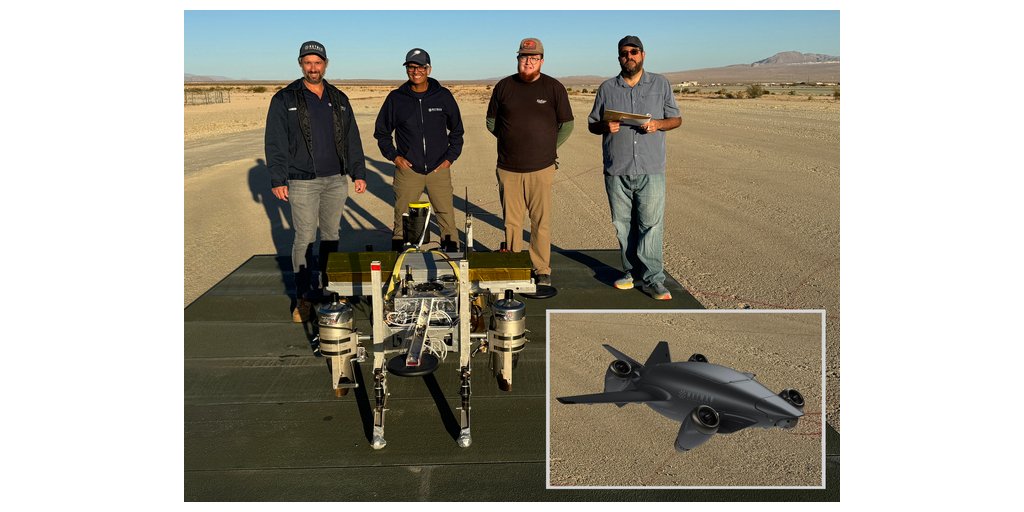
Mayman Aerospace, supported by UAE-based Edge Group/SDF, has successfully completed flight tests of its RAZOR VTOL test bed at a U.S. Department of Defense military facility in Southern California. These flight tests replicate the dimensions and weight of the RAZOR P100 aircraft, utilizing the same advanced propulsion systems, engine gimballing, thrust vectoring, and flight control technologies.
These autonomous tests, partly funded by the U.S. Department of Defense, were aimed at validating essential systems such as avionics, thrust vectoring, flight control laws, and command and control (C2) mechanisms. One of the test’s primary goals was to transition the aircraft’s engines from hover mode to high-speed winged flight—an essential feature for future operational success. Mayman Aerospace’s track record of autonomous take-offs and landings was further reinforced through these rigorous tests.
Innovative VTOL Aircraft with Multiple Military Applications
The RAZOR VTOL aircraft is designed to meet versatile military and defense needs. Its advanced control system enables rapid and secure transport of critical supplies, enhancing military readiness in demanding environments. Additionally, the RAZOR can be customized to extend the range of small Air-to-Air or Air-to-Surface missiles, such as Brimstone and Hellfire, allowing for precision strikes at distances greater than 200 miles.
The RAZOR’s unique ability to launch vertically, without requiring specialized infrastructure, makes it an ideal platform for multiple functions, including ISR (Intelligence, Surveillance, Reconnaissance) missions, target designation, and missile delivery. Its high-speed capabilities allow it to intercept drones swiftly, providing a cost-effective alternative to traditional missile systems. With AI-driven command and control systems, RAZOR ensures precise and efficient payload delivery at a fraction of conventional costs.
A Transformational Solution for Battlefield Intelligence
The RAZOR UAS (Unmanned Aerial System) transforms battlefield intelligence gathering, offering rapid, adaptable data acquisition. Thanks to its VTOL capability, the RAZOR can be deployed in confined spaces, and with projected speeds of up to 500 mph, it features advanced surveillance technology, ensuring high-quality imagery through large gimbaled sensors. Operating at high altitudes, RAZOR provides real-time, reliable intelligence, enabling faster and more informed decision-making in modern warfare scenarios.
David Mayman, Founder and CEO of Mayman Aerospace, expressed his excitement over the successful tests, stating, “These flight tests were a complete success, and we expect the P100 to exceed speeds of 450 knots. RAZOR is redefining how defense commanders and civilian leaders view autonomous VTOL technology. We are proud to be a software-driven hardware company, pushing performance boundaries once thought impossible.”
Flawless Autonomous Mission Sets
Dr. Manu Sharma, Chief Engineer at Mayman Aerospace, highlighted the success of the tests, saying, “During these tests, we completed seven autonomous mission sets, with all systems operating flawlessly. One key objective was to validate updates to our flight software and control laws, particularly in the transition from hover to winged flight. This is a critical capability, and the additional autonomous flight time strengthens our confidence in the system.”
The successful flight tests mark a significant milestone for Mayman Aerospace, with more test flights scheduled for later this year. The continued progress underscores Mayman Aerospace’s dedication to advancing VTOL technology for military and defense applications.
About Mayman Aerospace
Mayman Aerospace is a cutting-edge aerospace company specializing in the development of turbine-powered VTOL aircraft. Backed by Edge Group/SDF and recognized for its innovative technology, Mayman Aerospace is redefining the future of autonomous flight with advanced aircraft designed for military, defense, and civilian applications.
For more information, visit Mayman Aerospace’s official website.
